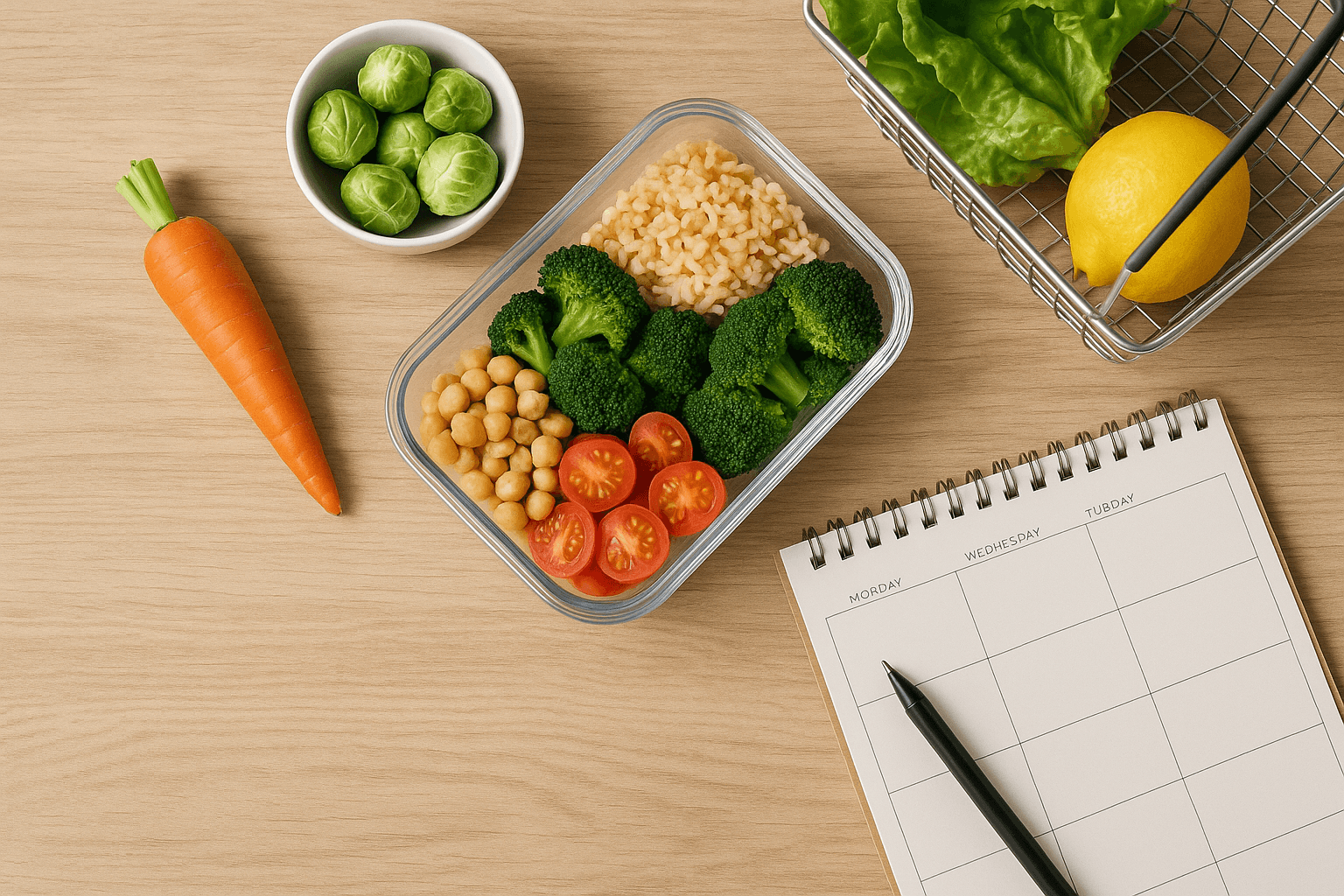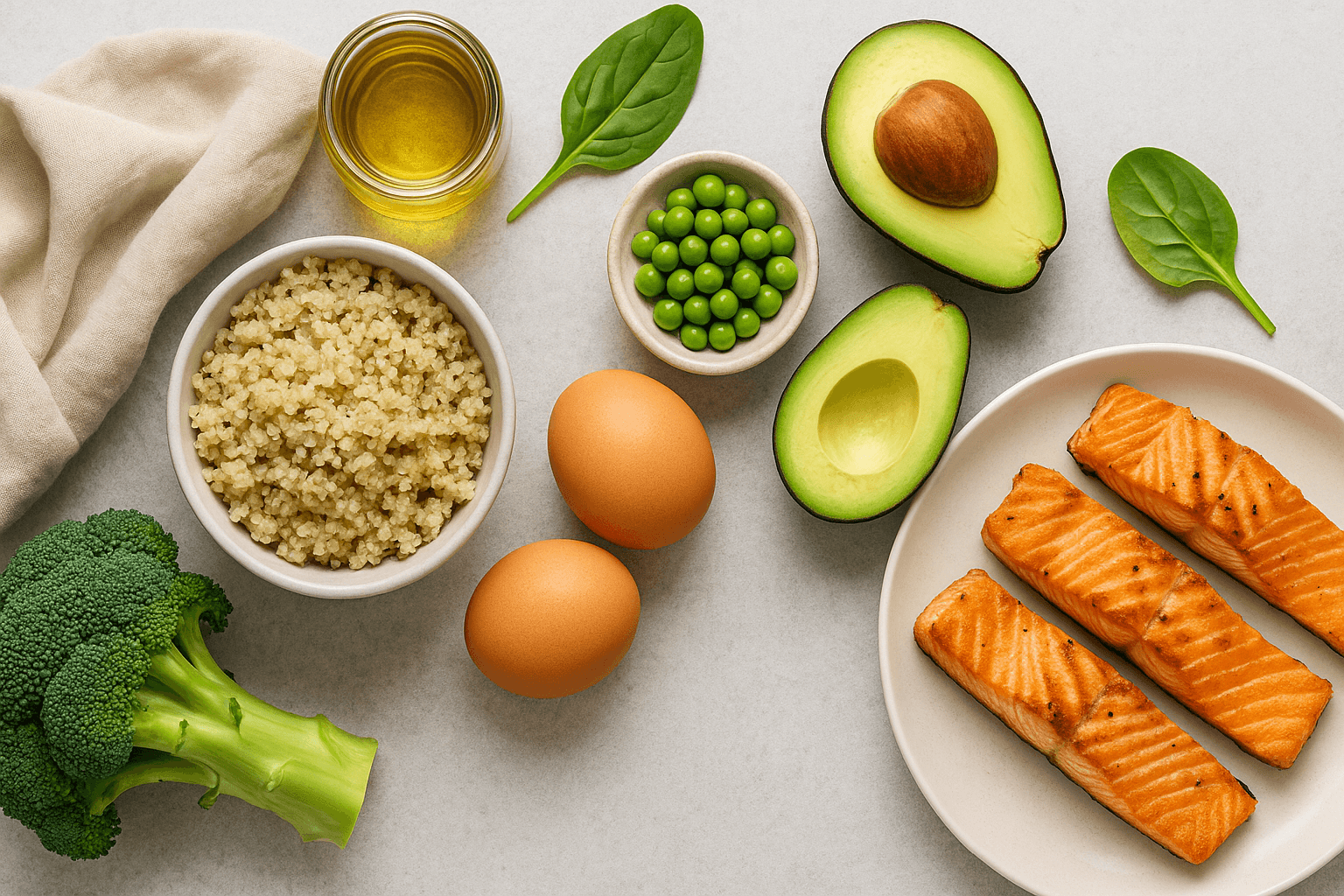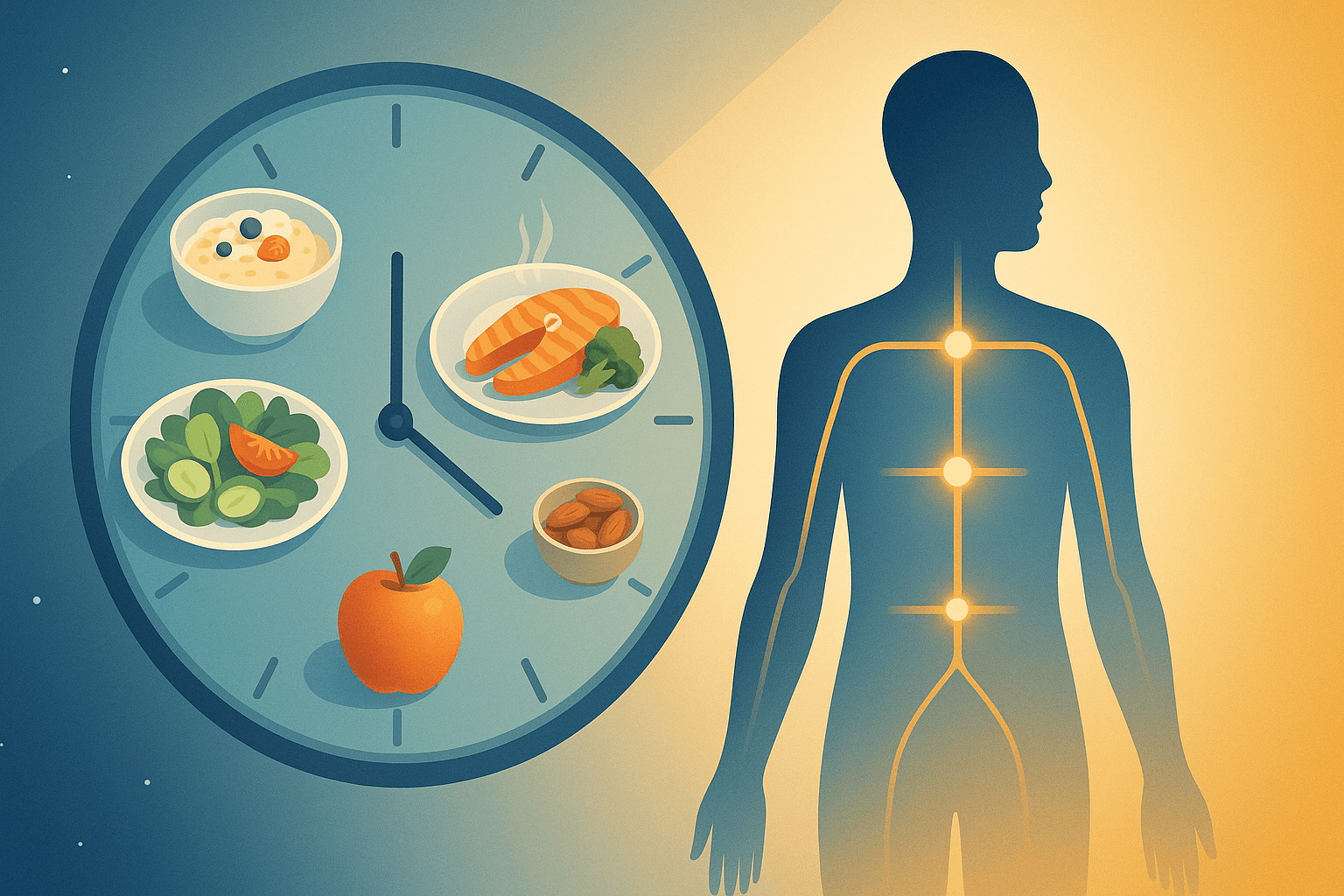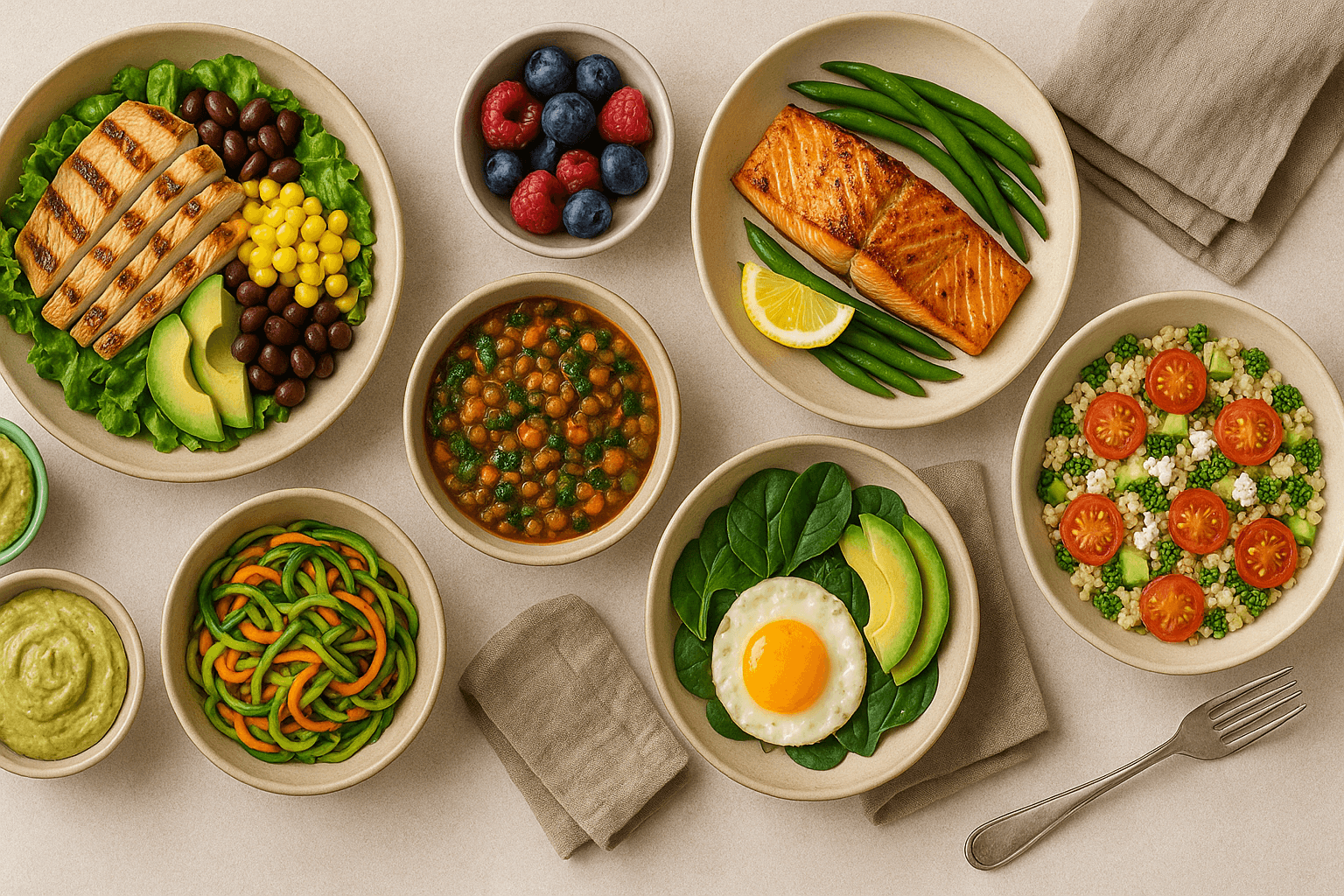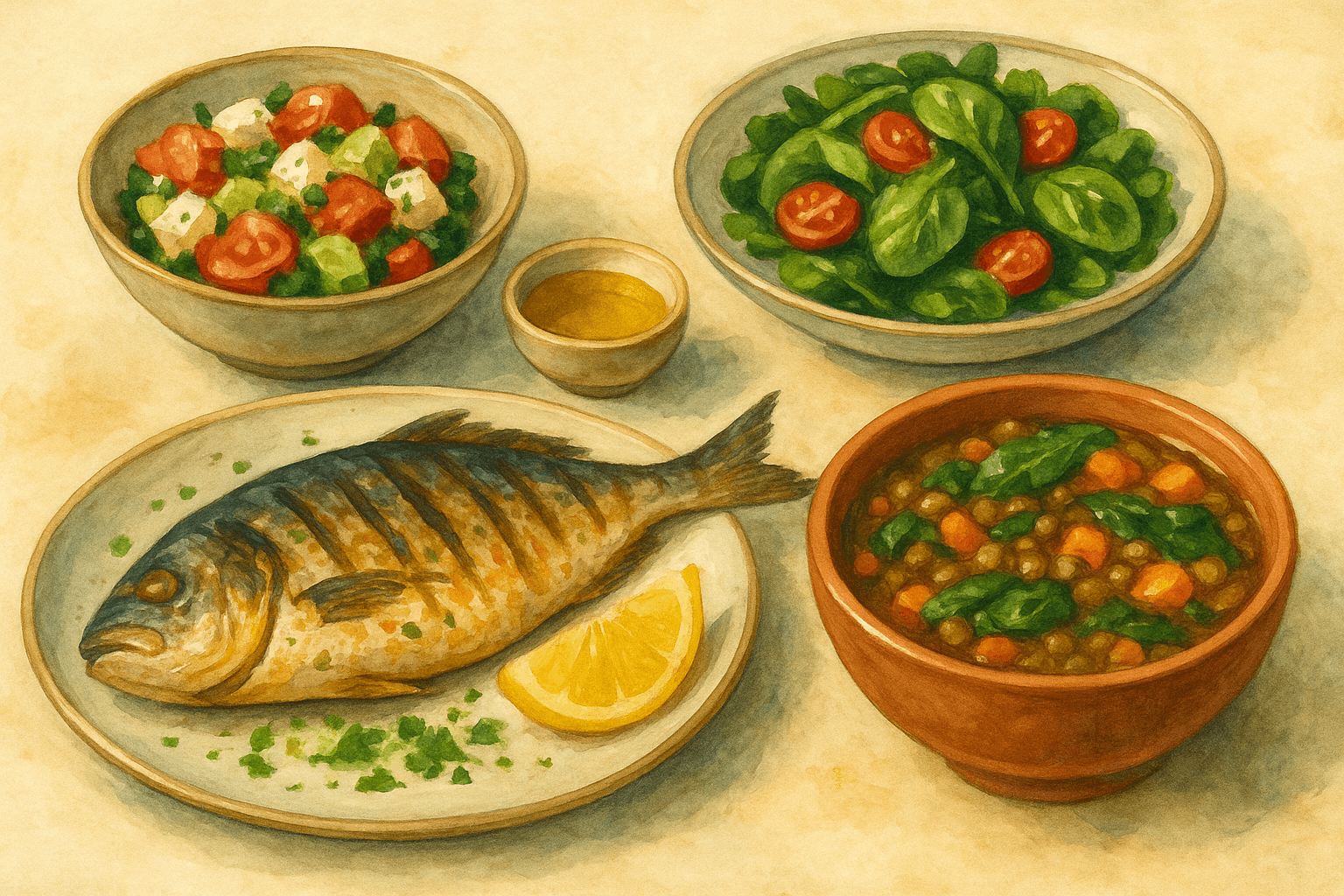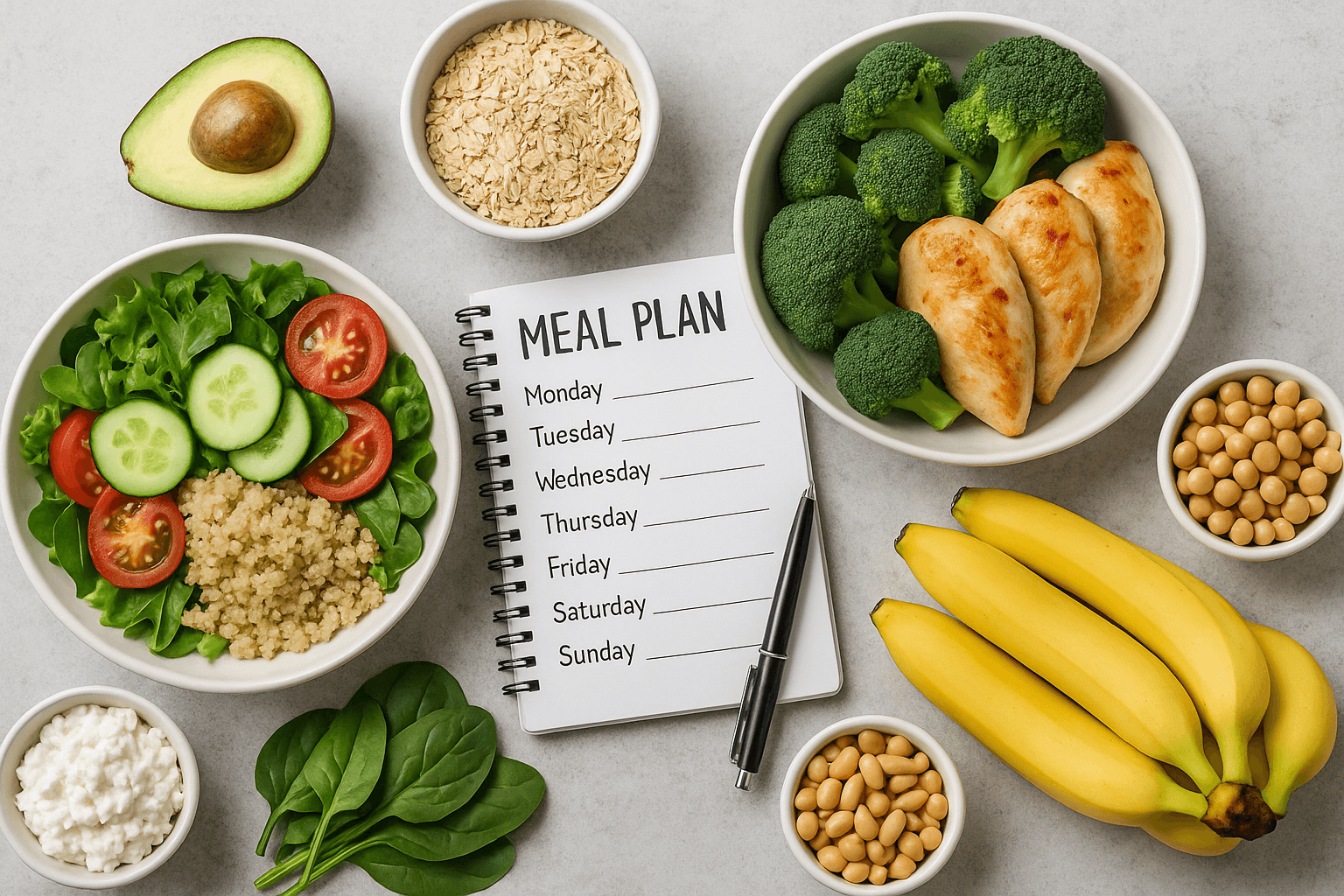MEAL PLANS THAT WORK: HOW TO TAKE CONTROL, EAT WELL, AND MAKE NUTRITION EFFORTLESS (NO MATTER YOUR SCHEDULE)
Published on August 2, 2025

Meal planning is greater than the sum of its recipes and groceries. It’s about creating a life in which eating well is simple, joyful and draws on all aspects of who you are (not just your love for whole grains or veggies) — no matter how busy, unpredictable or screwy it gets. If you’ve ever been daunted by the myriad options of dinnertime fulfillment, seduced by takeout after a long day or simply exhausted at 6 p.m. and again scrambling to figure out what’s for dinner — welcome! As a dietitian who’s witnessed the life-transforming power of pragmatic planning, I am here to attest: meal plans can set you free! When done right, they provide the space and structure to eat well without stress or hurry — not by cutting costs but simply learning how good food is cheap when you cook it yourself.
Why Meal Planning Is Game-Changing
Meal planning isn’t about confinement — it’s actually quite freeing. When you plan, you take the reins and save your time, energy and mental bandwidth for what matters to YOU instead of where would that food decision make decisions suck!
Reduces decision fatigue
You take thousands of little decisions every day. Planning meals in advance puts healthy choices on autopilot. No more 7 p.m. kitchen standoffs when no one can figure out what to cook — simply follow your plan and you’ll be golden, with a little extra time on the side for family, hobbies or rest.
Supports nutrition goals
A solid plan ensures you’re scoring a mix of protein, healthy fats, carbs and fiber—without obsessing over every macro or calorie. You’ll be more apt to incorporate a rainbow of vegetables, whole grains and nourishing proteins — as opposed to the “same five meals on repeat.”
Saves money and cuts waste
And when you shop with a plan, you purchase only what you know will get eaten — and waste less. No more slimy spinach at the back of your fridge; no more “emergency” lunches that cost half your day’s wages — just fast, purposeful shopping and meals you actually want to eat.
Boosts health outcomes
Those who plan meals eat more veggies and fiber, stay at a healthy weight, better control blood sugar levels and have greater cooking skills. Meal planning is a good habit at any age and stage of life.
Meal planning is a way to make good intentions translated into actual, here-now food choices and actions in daily life feel easy and doable — not overwhelming.
Building Blocks of a Successful Meal Plan
Every great meal plan is based around four basic principles — once you’ve got those mastered, creating one for your week will be easy as pie.
Variety
A varied plan provides your body with a wide array of vitamins, minerals and plant compounds. It also helps form a strong gut microbiome — and keeps your meals interesting. Feel free to experiment with new recipes, cycle through various sources of protein, grains and vegetables or take a trip around the world. Even swapping out your salad greens or breakfast toppings can provide sparks of joy and nutrition.
Balance
Balanced meals are the key to sustainable energy, less cravings and real satisfaction.
Complex carbs: Whole grains, beans and lentils are great sources for not only energy-providing qualities but also fiber!
Lean protein: Poultry, fish, eggs tofu beans or Greek yogurt will repair muscles control hunger and support immunity.
Healthy fats: Saturated and unsaturated, found in the right portions of avocado, nuts, olive oil and seeds which fill you up without weighing you down — or plugging your brain.
Fiber: Look for fruits and veggies to support disease prevention, digestion and add color (and taste!) to your meals.
Balance also involves allowing for the occasional treat — a good plan finds room to celebrate, have date nights and make those family favorites too.
Flexibility
No meal plan is made and executed as written! The real success, though, is planning for real life — work meetings or spur-of-the-moment outings; days when you’re in the mood to eat something that isn’t what’s on your heavily plotted calendar.
Keep “back pocket” meals: Quick solutions like a veggie omelet or stir-fry, sandwich or pasta with beans can substitute when plans shift.
Plan for leftovers: Double up your cooking, recycling into new dishes to satisfy long-term time and sanity. Yesterday’s roasted veggies can both round out today’s salad or be wrapped for tomorrow.
Flexibility isn’t thinking “screw this all” when things go to hell — it’s having a pre-prepared response so you never feel like an abysmal failure.
Simplicity
Eating healthy doesn’t have to be complicated or take hours in the kitchen. All you need to do is focus on healthy, delightful food that you love. Base your routines around easy-to-prepare staples like grains and proteins (beans or quinoa) as well chopped veggies. The simpler the plan, the more likely you are to stick with it — and the less stress you’re going experience around food.
Want to make a meal plan of your own?
Step 1: Define Your “Why”
Are you meal planning for better eating, weight loss or to save time and money? To help manage diabetes not sure where to start with family meals at your kitchen table? Trying quick recipes like turkey pulled barbecue sliders on a weeknight no dicing food prep needed. Your “why” determines your priorities and keeps you motivated to keep going.
Step 2: Choose Your Planning Style
Traditional Weekly Plan
List every breakfast, lunch and dinner for the week. Perfect for families on the go or those who do well with order.
Batch Cooking
Prep proteins, grains and veggies on the weekends; mix-and-match them for your lunches — or dinners!
Theme Nights
Give themes — Taco Tuesday, Stir-Fry Friday, Soup Sunday — to minimize decisions and make it fun.
Cook Once, Eat Twice
Make double batches, freeze some for later and find fun new applications to use leftovers in so you can eliminate weeknight stress.
And remember, there is no one “right” way — only the right way for you and your lifestyle!
Step 3: Make a Grocery List
Begin by shopping your own pantry and refrigerator. Organize your list around your plan, in sections like “dairy” for speedier shopping and skipping aimless meandering. A great list saves you money, time and last-minute frustration.
Step 4: Prep for Success
It doesn’t have to take hours. And a bit of prep after shopping — washing greens, chopping carrots, cooking off some quinoa or portioning snacks out into containers ahead of time — sets you up for healthy eating all week long.
Store washed and prepped food at eye level for quick whole meals or snacks when you open your fridge.
Example Meal Plans for ALL Goals
1-Day Energy Plan
Breakfast: Greek yogurt with mixed berries and chia seeds plus walnuts for some protein, fiber and satiety.
Lunch: Chickpea and quinoa salad with roasted sweet potatoes, spinach, cherry tomatoes and a lemon-tahini drizzle—rich in slow-digesting carbohydrates, protein and antioxidants.
Snack: Apple slices and peanut butter for something sweet, filling and an easy pick-me-up.
Dinner: Grilled salmon with brown rice, steamed broccoli and creamy avocado.
3-Day Balanced Plan
Day 1:
Breakfast: Oatmeal with banana, almonds and a dusting of cinnamon.
Lunch: Turkey and Veggie Wrap with hummus, crunchy lettuce and other vegetables.
Snack: Carrot sticks and hummus.
Dinner: Lentil curry with brown rice and garlicky sautéed spinach.
Day 2:
Breakfast: Scrambled eggs with fresh spinach and whole-grain toast.
Lunch: Bean and corn salad with lime juice and olive oil; serve over mixed greens.
Snack: Cottage cheese with pineapple or berries.
Dinner: Soba with stir-fried chicken, broccoli and carrots in soy-ginger sauce.
Day 3:
Breakfast: Chia pudding with mango and coconut, prepared the night before.
Lunch: Quinoa bowl with roasted veggies, chickpeas and feta, topped with a drizzle of lemon.
Snack: Greek yogurt with berries and flaxseed.
Dinner: Baked cod with sweet potato and green beans with a squeeze of lemon.
7 Day Family Meal Plan (Pick and Mix)
Breakfasts: Overnight oats with fruit, veggie omelet, smoothie bowl, whole-grain toast with nut butter.
Lunches: Bean salad with lime and herbs, turkey wraps, minestrone soup, hummus with whole-wheat pita and crudité.
Dinners: BBQ chicken with roasted carrots and potatoes, stir-fried tofu, salmon patties on quinoa or spinach, homemade veggie pizza, sheet pan fajitas, curry over chickpeas, pasta primavera.
Snacks: Sliced bell peppers and hummus, yogurt parfaits, make-your-own trail mix, apple slices with nut butter, roasted chickpeas, hard-cooked eggs.
This flexible plan keeps it interesting and healthy while also providing a lot of options for everyone in your household.
Pro Tips to Make Meal Planning a Breeze
Cook up some grains, beans and proteins in batches: Repurpose rice, lentils or chicken throughout the week.
Stock your pantry: Canned beans, whole grains, broth, frozen veggies and basic spices let you throw together healthy meals even when the fridge is bare.
Prep snack packs: Portion out nuts, seeds, chopped veggies, or fruit into containers so healthy snacks are always in arm’s reach.
Keep a backup meal list: Post five go-to meals on the fridge for nights when your plan falls apart.
Get everyone involved: Let kids help pick recipes or prep ingredients—they’ll be more invested in eating what you make.
Stay flexible: Life happens. If you order takeout or skip a planned meal, don’t stress—adjust your plan and keep going!
Common Pitfalls—and How to Avoid Them
Making it too complicated: Start small. Planning even a few meals each week can make a big difference.
Forgetting about snacks: Planned snacks help you avoid vending machines, mid-afternoon slumps, or late-night overeating.
Thinking you have to be perfect: There will be days when your plan goes off track. That’s not failure—it’s real life! What matters is your long-term pattern, not the occasional curveball.
Why Meal Planning Isn’t About Perfection
Meal planning isn’t about perfection; it’s a tool, not a test. It’s about helping you live better, not boxing you into a rigid schedule or punishing you for eating a burger on a night you promised yourself steamed veggies. When used as a friendly practice—one that changes and adapts with your life, moods, and needs—you’ll find that it’s not only sustainable but also enjoyable! The sense of security that comes from knowing what you’re eating and when you’re getting a healthy, nutrient-dense meal is unparalleled.
A Dietitian’s Final Word
There are few simpler, more powerful gifts you can give yourself and your loved ones than meal planning. With a tiny bit of judgement, you fight to turn stress into freedom, chaos and calm equal all at once and the never ending question every day: what is for dinner? into a fun time of your morning or afternoon. Get to work on growing back your gut’s good bugs — and remember: every meal you lovingly prepare is a vote for the health, happiness and future of You. Here’s to good eating. “One plan, one plate and one delightful week”



